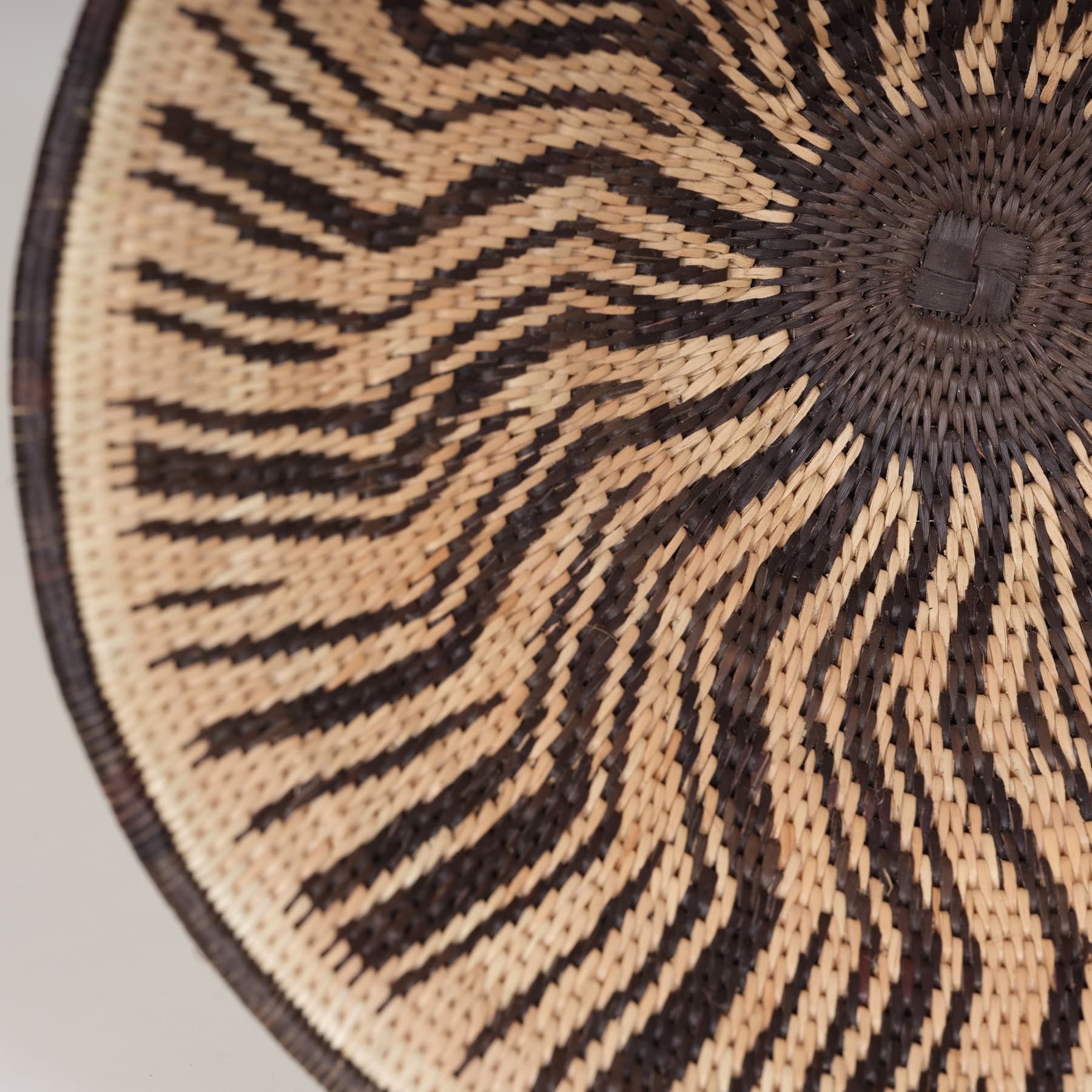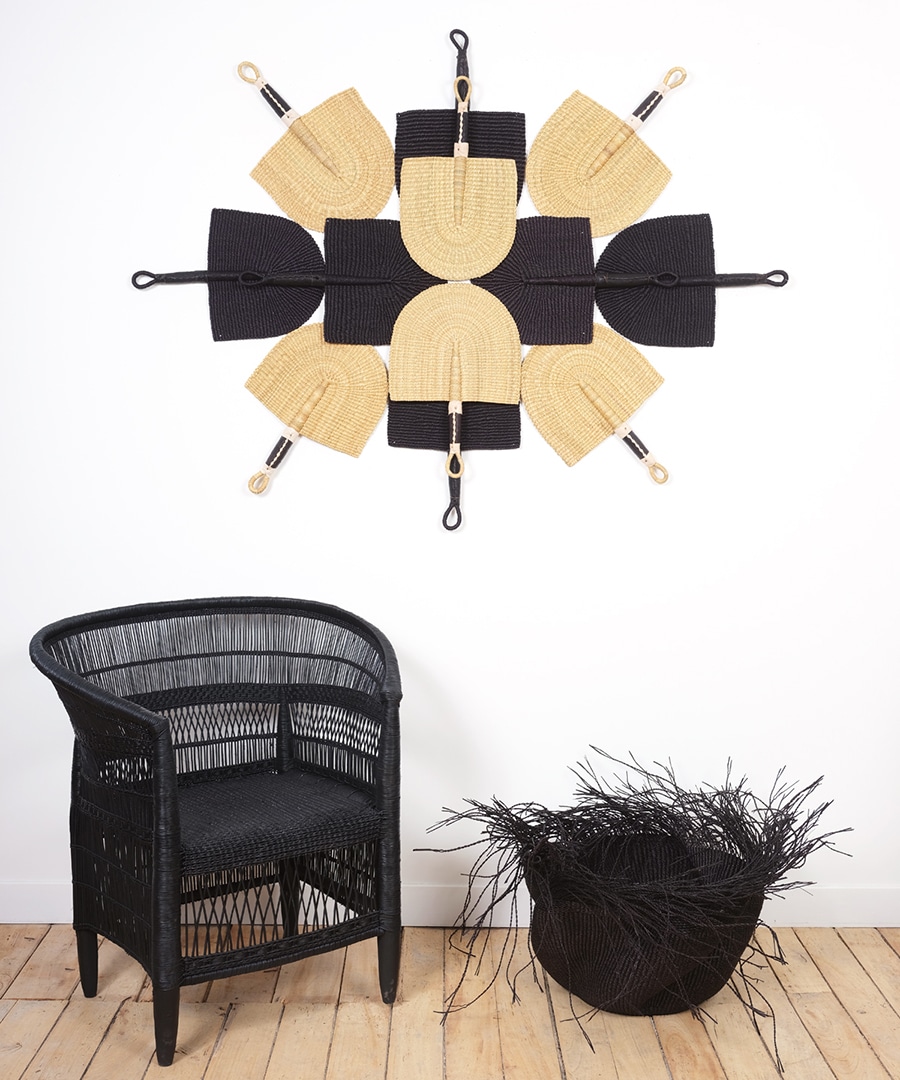Description
Woven african basket: The hidden treasure of namibian basketry
The woven African basket Kavango is an exceptional craft. These Kavango baskets have their roots in agricultural traditions, where they were used for harvesting millet or corn. Each basket, unique in its kind, tells a different story and reflects the attention to detail. This extraordinary piece of craftsmanship, shaped with passion and dedication, mirrors the history and culture of the Kavango people. A true fusion of tradition, exceptional craftsmanship, and timeless beauty.
Exceptional artistry to enhance your interior
Plant materials are abundant in this region of the Okavango Delta, the largest inland delta on the planet and a true oasis in the Kalahari Desert. These deep baskets make charming decorative elements on tables or shelves. We strive to obtain accurate measurements for each Kavango basket, both the one you will receive and the one pictured. This Kavango basket is exceptional craftsmanship. You can use it, but its incredibly intricate patterns deserve not to be hidden! Feel free to zoom in on the details to understand why this basket is undoubtedly the best in African craftsmanship. And to comprehend why this woven African basket is so special, we provide more details below!
Historical and cultural significance of Kavango woven african basket
Situated in the Okavango Delta, the Kavango and Ovambo peoples produce these traditional woven baskets. Plant materials are abundant in this region, which is the largest inland delta globally and a true oasis in the Kalahari Desert. Artisans harvest local Makalani palm leaves and create vegetable-based dyes from flower petals and roots, using ancestral recipes passed down through generations.
Getting the natural dye to penetrate the waxy palm leaves is very delicate. Therefore, some fibers used for weaving may remain immersed in a dye bath for more than a week. This dense basketry uses dyed palm leaves, which are then wrapped around grass, serving as the structure for the basket and its crafting. It is essential to note that this “coil” weaving is the most complex and time-consuming type of weaving. Controlling the thickness and regularity of the coils requires years of practice.
Moreover, as a basket gets larger, exponentially more time is required to increase its diameter. Thus, as the basket flares upward and outward, the coils on each row become much longer. It takes a significant amount of time and skill to create a Kavango basket. For these reasons, the quality of weaving, basket size, difficulty in producing dye colors, and the complexity of the pattern determine the prices of these unique creations.
Namibia, the birthplace of Kavango basket
Namibia, officially known as the Republic of Namibia, is a country in Southern Africa. Its western border is the Atlantic Ocean, and Windhoek is the capital and largest city.
Namibia has a population of about 2.6 million people. Its economy relies on agriculture, tourism, and the mining industry. Although the manufacturing sector is relatively small, it contributes to the economic landscape. Namibia is characterized by the vast and arid Namib Desert, making it one of the least densely populated countries globally.





